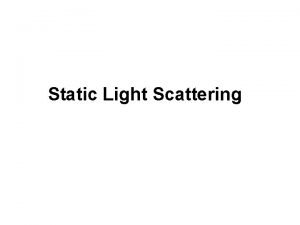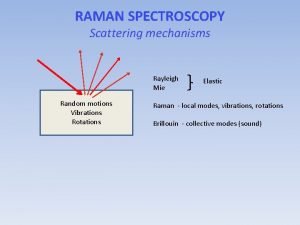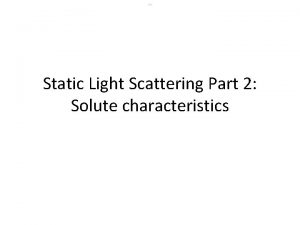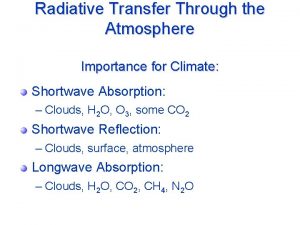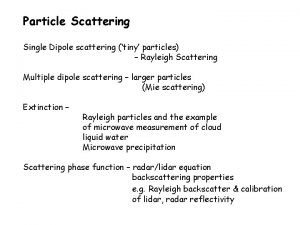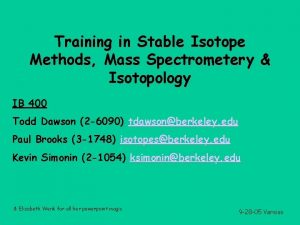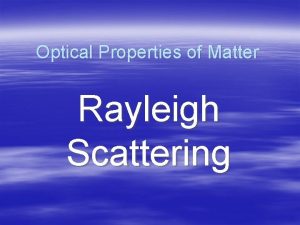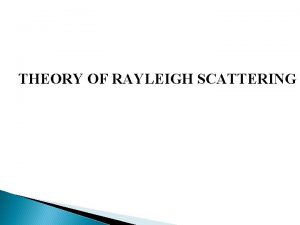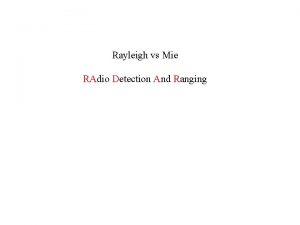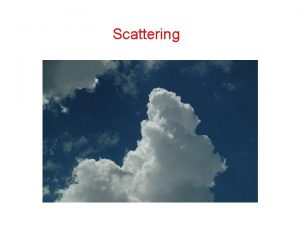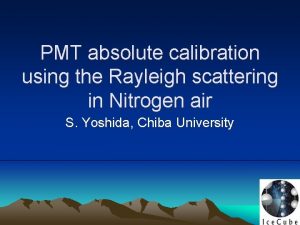Rayleigh Scattering Mapping System School of Physics University







![Comparisons between scattering and absorption Typical scattering and absorption[1] maps 1. The optical absorption Comparisons between scattering and absorption Typical scattering and absorption[1] maps 1. The optical absorption](https://slidetodoc.com/presentation_image_h2/5fdc59e6a40afaf4ea2b0288ce81dfbf/image-8.jpg)





- Slides: 13

Rayleigh Scattering Mapping System School of Physics, University of Western Australia – Italy Workshop on GW Detection 2005

Contents: 1. Introduction of ARSMS 2. Scattering mapping examples 3. Comparisons between scattering and absorption 4. Conclusion 5. Acknowledgement

Experimental Set-up CCD camera Sample Rotation Mount Laser Translation PC Stepper-motor controller box CCD camera controller box The ARSMS contains two subsystems: • Optical imaging subsystem • Mechanical motion control subsystem

Technique Parameters • • • Translation: Resolution: 0. 05 mm Rotation: Resolution: 0. 3 degree (the diameter of sample is 150 mm) Scattering sensitivity: 0. 5 ppm/cm (the laser power is 10 mw) Advantages • High resolution • 3 D images • Rayleigh scattering intensity • Mapping large-size test masses

Measurement and Data Processing 1 Single beam images 2 2 D images 3 3 D image

Examples: Single images and 2 D images

Examples: Reconstructed 3 D image Sample 2
![Comparisons between scattering and absorption Typical scattering and absorption1 maps 1 The optical absorption Comparisons between scattering and absorption Typical scattering and absorption[1] maps 1. The optical absorption](https://slidetodoc.com/presentation_image_h2/5fdc59e6a40afaf4ea2b0288ce81dfbf/image-8.jpg)
Comparisons between scattering and absorption Typical scattering and absorption[1] maps 1. The optical absorption is measured using the photothermal deflection technique at Laboratoire des Matériaux Avancés, Lyon.

Comparisons between scattering and absorption • High scattering correlates with higher absorption. • Scattering structure is spatially displaced from a similar absorption structure.

Correlations between scattering and absorption Absorption and scattering in sample 1: In detail there is not a clear point to point correlation between scattering and absorption.

Correlations between scattering and absorption Absorption and scattering in sample 2: The spatial displacements indicate that absorption centres and scattering centres are laid down during crystal growth at different distances from the solid liquid interface.

Conclusions: • 2 D and 3 D scattering mappings reveal different features—the inhomogeneities and the point defects. • Scattering and Absorption seem to be coming from different origins • The ARSMS can ensure that an adequate low level of scattering is achieved for gravitational wave detectors and other precision applications. • The ARSMS may provide data that can be utilized to improve the quality control of both single crystal and glass optical materials.

Acknowledgement • LSC Optics Working Group • VIRGO Jean-Marie Mackowski’s Group • Australian Research Council • ACIGA • My Supervisors • My fellow students and colleagues
 Rayleigh scattering formula
Rayleigh scattering formula Area of cross section
Area of cross section Rayleigh theory of light scattering
Rayleigh theory of light scattering Mie scattering vs rayleigh
Mie scattering vs rayleigh Rayleigh theory of light scattering
Rayleigh theory of light scattering Rayleigh theory of light scattering
Rayleigh theory of light scattering Rayleigh scattering
Rayleigh scattering Horizontal
Horizontal Scattering cross section in nuclear physics
Scattering cross section in nuclear physics University physics with modern physics fifteenth edition
University physics with modern physics fifteenth edition Memory parameters
Memory parameters Forward mapping vs backward mapping
Forward mapping vs backward mapping Terjemahan
Terjemahan Rayleigh distillation
Rayleigh distillation
